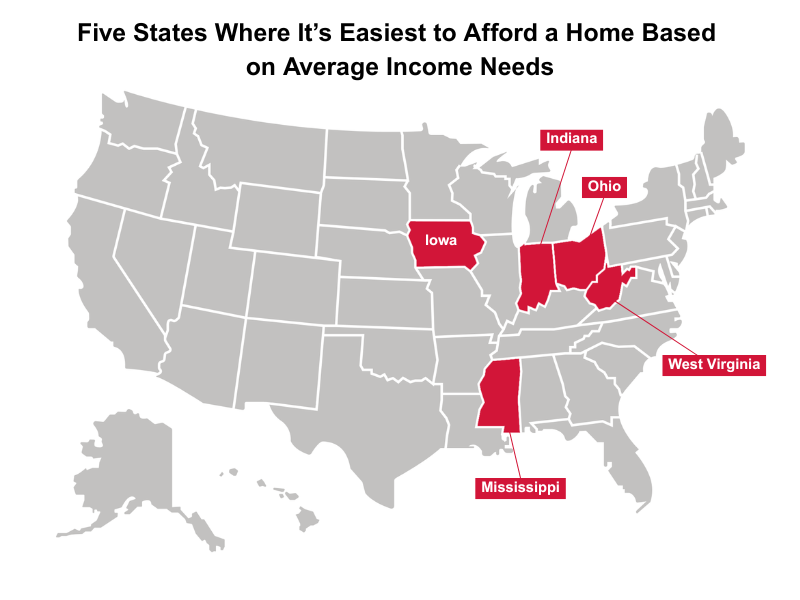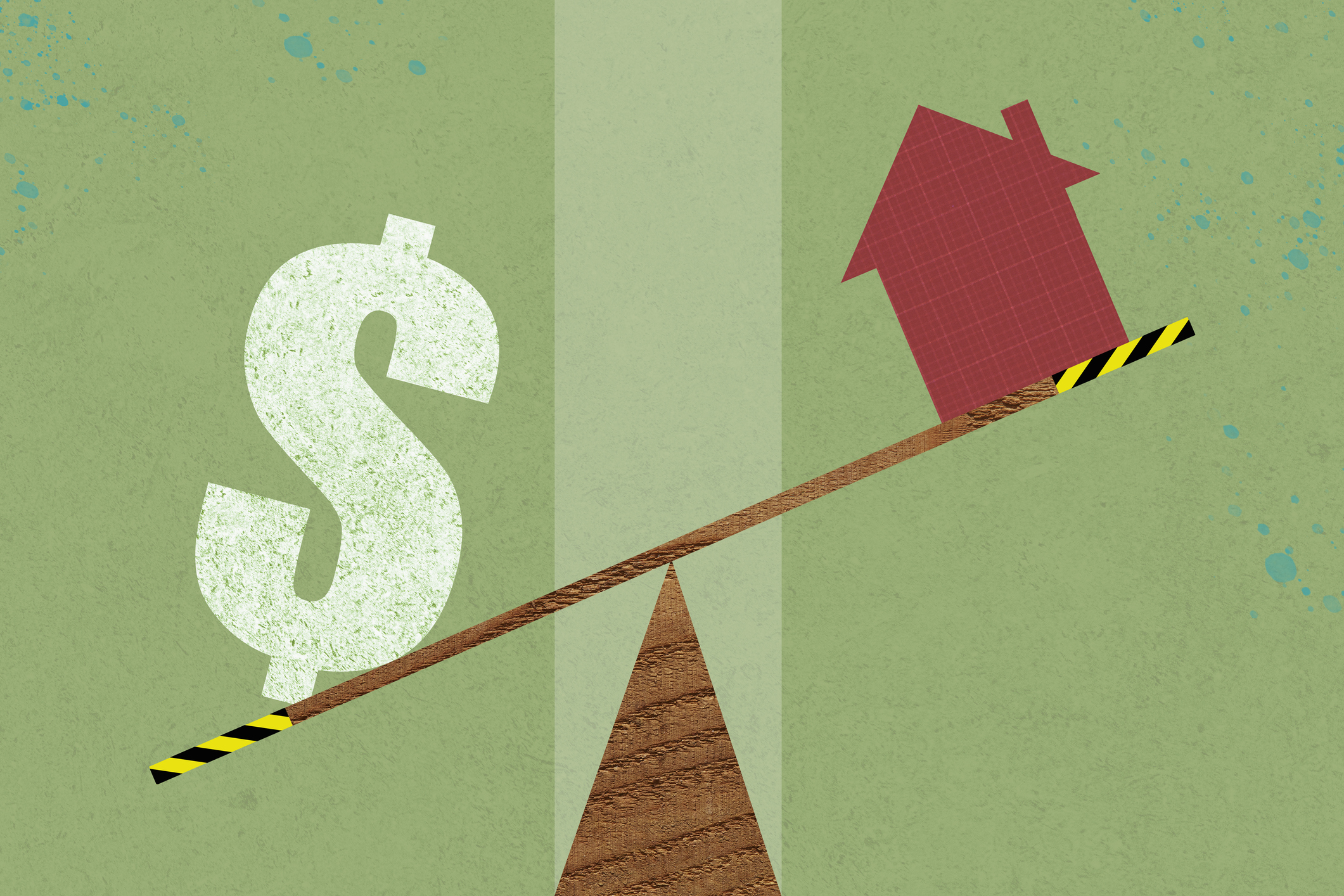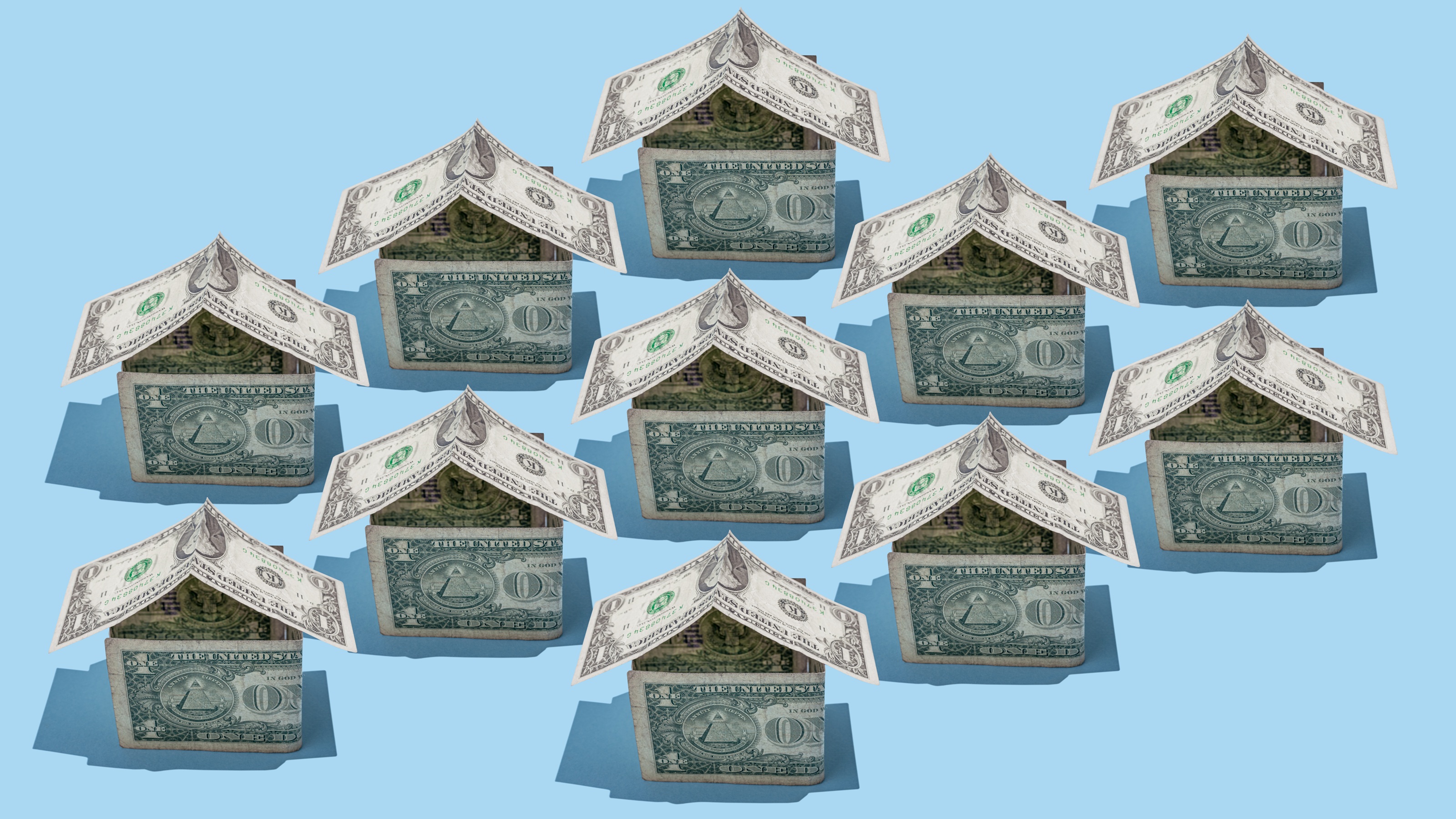What It Really Takes to Buy a Home in 2025: Affordability, Income and Market Challenges
Home prices are up, mortgage rates are high and buyers are getting older. Here's what it really takes to afford a house in today's market.
Homebuying season is here — which means you're not alone if you’re on the hunt for a new home. You and many others are shopping around. But according to a recent study, you’ll need to earn at least six figures to land a typical home in the U.S.
According to a Bankrate study, 30 states and the District of Columbia are more demanding of homebuyers, requiring them to earn nearly $117,000 if they want to buy a home in these areas. This is up 50% from five years ago, when the typical income was almost $78,000.
Prices aren’t the only thing that’s changed. The typical homebuyer today is older, wealthier and less likely to be purchasing their first home.
From just $107.88 $24.99 for Kiplinger Personal Finance
Become a smarter, better informed investor. Subscribe from just $107.88 $24.99, plus get up to 4 Special Issues

Sign up for Kiplinger’s Free Newsletters
Profit and prosper with the best of expert advice on investing, taxes, retirement, personal finance and more - straight to your e-mail.
Profit and prosper with the best of expert advice - straight to your e-mail.
According to data from the National Association of Realtors (NAR), first-time buyers now make up just 24% of the market, down from 32% last year — and the lowest share since NAR began tracking the data in 1981.
The median age of first-time buyers rose to 38, while repeat buyers are even older, typically 61 years old, up from 58 the year before. These stats point to just how challenging affordability has become, especially for younger buyers trying to break into the market for the first time.
What’s causing the increase?
Home prices have been climbing for the last five years. Homebuying demand soared when interest rates hit rock bottom during the COVID-19 pandemic in 2020 and 2021, causing prices to skyrocket.
But inventory didn’t keep up with demand. Homes that went on the market sold within a couple of days or weeks — sometimes without home inspections or appraisals — and in some cases, buyers bought homes sight unseen.
Today, inventory still hasn’t kept up with the demand. While there’s an increase in home listings, there are many more prospective homebuyers than home sellers. Because of that, sellers can list their homes for a premium price, knowing there are more people who are looking to buy them, even if homes have stayed on the market longer than a few years ago.
While home prices are going up, mortgage rates are climbing with it. The national average for a 30-year mortgage is 6.90%. In December of 2024, it was 6.87%.In January 2022, it was 3.50%. We may never see the same rock-bottom mortgage rates we did during the early pandemic years, but with the increase in mortgage rates and home prices, it’s getting even more difficult to afford to buy a home.
Home prices are at an all-time high and wages haven’t increased at the same rate. The median sale price of homes sold in January 2025 was $419,200. The federal minimum wage is $7.25 an hour and has not changed since 2009.
Use the tool below, in partnership with Bankrate, to compare offers and rates from different mortgage lenders.
States with the highest and lowest income requirements
How much money you make impacts where you can live. While nationwide market trends can help paint a picture of how the housing market is doing across the country, there are many different housing markets. And in some markets, you’ll need to earn a lot more to afford an average home in those areas.
According to the Bankrate study, the states where you need to earn the most are:
- District of Columbia: $240,009
- Hawaii: $235,638
- California: $213,447
- Massachusetts: $174,392
- Colorado: $168,643

On the other end of the list, the states where you can earn the least are:
- West Virginia: $64,179
- Iowa: $70,437
- Ohio: $71,080
- Mississippi: $72,072
- Indiana: $72,342

Utah saw the biggest increase. In January 2020, the median home sale price was $433,546 (adjusting for inflation). As of January 2025, it’s now $605,400 — an 89.4% jump, or $151,956. Montana saw the second-biggest, at $151,956.
Can you buy a home in 2025?
Even though home inventory is growing ever-so-slightly right now, it’s harder than ever to buy a home in 2025. Home prices may go down in some housing markets while others will see it go up. It depends on the area, the community, the economy and other factors.
Along with your specific homebuying checklist, you’ll also need to consider a few other things.
1. How much home can you afford? Think beyond just the principal and interest when estimating your monthly mortgage payment. You’ll also need to account for property taxes, homeowners insurance, and, in many cases, private mortgage insurance (PMI).
Even with a fixed interest rate, your monthly payment can increase over time due to changes in taxes and insurance costs. That’s why it’s smart to build in a little wiggle room when calculating what you can comfortably afford.
2. Explore what homebuying programs you might qualify for. Whether it’s your first home or your fifth. Many cities, counties and states offer programs that can help with down payments, closing costs, or favorable loan terms.
Every location is different, so take time to research what’s available where you live — or where you plan to move. These programs can vary widely, and a little digging could save you thousands.
3. Shop around for everything. Don’t settle for the first lender you come across. Mortgage rates and loan terms can vary widely, so it pays to compare offers. Start by getting prequalified and then preapproved to show sellers you’re a serious buyer when touring open houses.
And don’t stop at your mortgage. It’s just as important to shop around for homeowners insurance. An insurance agent can help you find the best coverage and rate based on your location, property and specific needs.
The bottom line
Buying a home in 2025 isn’t impossible, but it does require more planning, patience, and persistence than in years past.
Rising prices and higher mortgage rates have made affordability a challenge, but with the right strategy — and a clear understanding of your budget and options — you can still make smart moves in today’s competitive market.
Related Content
Profit and prosper with the best of Kiplinger's advice on investing, taxes, retirement, personal finance and much more. Delivered daily. Enter your email in the box and click Sign Me Up.
Dori is an award-winning journalist with nearly two decades in digital media. Her work has been featured in the New York Times, Wall Street Journal, USA Today, Newsweek, TIME, Yahoo, CNET, and many more.
Dori is the President of Blossomers Media, Inc.
She’s extensively covered college affordability and other personal finance issues, including financial literacy, debt, jobs and careers, investing, fintech, retirement, financial therapy, and similar topics. With a strong journalistic background, she’s also worked in content marketing, SEO, affiliate marketing, content strategy, and other areas.
Dori graduated with a Bachelor’s degree in Multimedia Journalism from Florida Atlantic University. She previously served as the president of the Florida Chapter of the Society of Professional Journalists, where her chapter won the coveted “Chapter of the Year” award for two consecutive years.
-
 I'm want to give my 3 grandkids $5K each for Christmas.
I'm want to give my 3 grandkids $5K each for Christmas.You're comfortably retired and want to give your grandkids a big Christmas check, but their parents are worried they might spend it all. We ask the pros for help.
-
 If You're Not Doing Roth Conversions, You Need to Read This
If You're Not Doing Roth Conversions, You Need to Read ThisRoth conversions and other Roth strategies can be complex, but don't dismiss these tax planning tools outright. They could really work for you and your heirs.
-
 Could Traditional Retirement Expectations Be Killing Us?
Could Traditional Retirement Expectations Be Killing Us?A retirement psychologist makes the case: A fulfilling retirement begins with a blueprint for living, rather than simply the accumulation of a large nest egg.
-
 How Much Would a $50,000 HELOC Cost Per Month?
How Much Would a $50,000 HELOC Cost Per Month?Thinking about tapping your home’s equity? Here’s what a $50,000 HELOC might cost you each month based on current rates.
-
 Should You Tap Your Home Equity Before 2026?
Should You Tap Your Home Equity Before 2026?As borrowing rates and tax law shifts converge, here's what homeowners need to know before pulling equity out of their home.
-
 11 Cities With the Cheapest Groceries in the US
11 Cities With the Cheapest Groceries in the USIf you live in one of these 11 cities, you're paying less than the rest of the country to keep your fridge stocked.
-
 My $1.2 Million Vacation Home Has a $360K Mortgage. I Don't Need My Upcoming $45K RMD. Should I Use It to Pay Down the Mortgage?
My $1.2 Million Vacation Home Has a $360K Mortgage. I Don't Need My Upcoming $45K RMD. Should I Use It to Pay Down the Mortgage?We asked wealth planners for advice.
-
 5 Simple Fixes to Save on Heat Bills This Winter
5 Simple Fixes to Save on Heat Bills This WinterWith fuel prices expected to rise 10% or more this winter, making your home more energy efficient will really pay off.
-
 5 Charming Small Towns Where America's Wealthy Retire
5 Charming Small Towns Where America's Wealthy RetireDiscover 5 small communities in the U.S. for affluent retirees — where charm outweighs the cost.
-
 I'm a Real Estate Investing Pro: This High-Performance Investment Vehicle Can Move Your Wealth Up a Gear
I'm a Real Estate Investing Pro: This High-Performance Investment Vehicle Can Move Your Wealth Up a GearLeave online real estate investing to the beginners. Accredited investors who want real growth need the wealth-building potential of Delaware statutory trusts.
-
 Retire in the Hamptons: Finding the Right Town for Your Budget
Retire in the Hamptons: Finding the Right Town for Your BudgetYes, it's favored by the rich and famous, but retiring in the Hamptons may not be out of your league. Here's a guide to affordability and and who is happiest living there.

